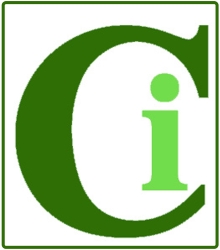
Circuit Innovations
Taking your electronics ideas and turning them into reality
| Home |
| Design Service |
| Kits and Products |
| Film and Television |
| Beginners Corner |
| Surplus Stock |
| Price / Ordering Info |
| Contact Us |
| Terms and Conditions |
| Links |
| About |
|
Circuit Innovations 24 Leasmires Avenue Easingwold York. YO61 3DU UK |
 |
| Beginner's Corner > Components > Transistors |
|
Transistors are one of the most common type of semiconductor and have many uses in electronics and can be broadly grouped into Bipolar and Field Effect types. although there are many sub-categories. The semiconductor material is typically silicon although germanium is still sometimes used. Silicon tends to be the preferred choice as it has much better characteristics and better thermal stability and repeatability than germanium. A transistor is made up from two different types of silicon (or germanium) known as n type and p type. The manufacturing process begins with a pure piece of silicon which is then treated with other compounds to either make the resulting molecular structure either more positive or more negative than the pure material. This process is usually known as doping. A bipolar transistor is made from a sandwich of the two types of silicon which results in either an npn transistor or a pnp transistor depending on which type of silicon is used for the 'meat' in the sandwich. Bipolar Transistors The transistor has three terminals, the outer two terminals are known as the emitter and the collector. The middle terminal is known as the base terminal. The collector and emitter terminals are similar in manufacture. The base terminal between them is much thinner. The bipolar transistor is a current controlled device. A small current applied to the base terminal will control a much larger current flowing from the collector to the emitter terminals. The emitter terminal is usually shown by an arrow on the component diagram. Notice that the direction of the arrow indicates whether the transistor is npn or pnp and indicates the direction of current flow. The principles of operation of the two types of transistor is the same apart from the direction of current flow through the device. Field Effect Transistors (FET) The FET has three terminals which have similar functions to those of the bipolar transistor. The terminals are known as the source, gate and drain which are similar to the emitter, base and collector of the bipolar transistor. The main operating difference is that the FET is a voltage controlled device. A control voltage applied to the gate terminal can regulate the current flow between source and drain terminals. The gate terminal of the FET usually has an extremely high input impedance of millions of ohms and doesn't present any loading on the gate control circuitry. This can be very useful if the FET is being used as a small signal amplifier but it also has the drawback of making the FET very susceptible to damage by static electricity. Fortunately, transistor manufacturers design in various diodes as part of the manufacturing process to help to limit the effects of static electricity. |